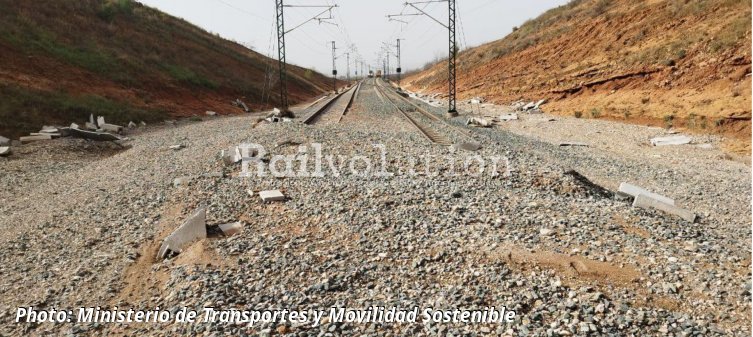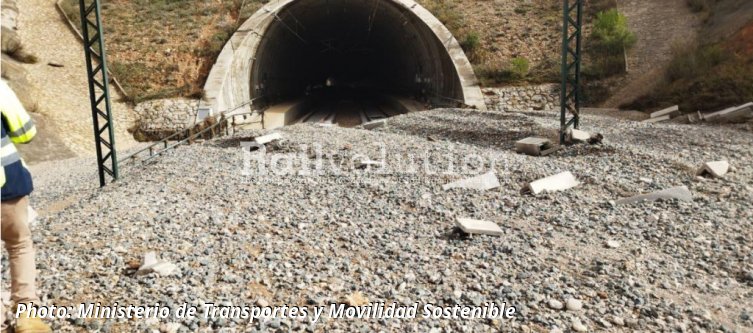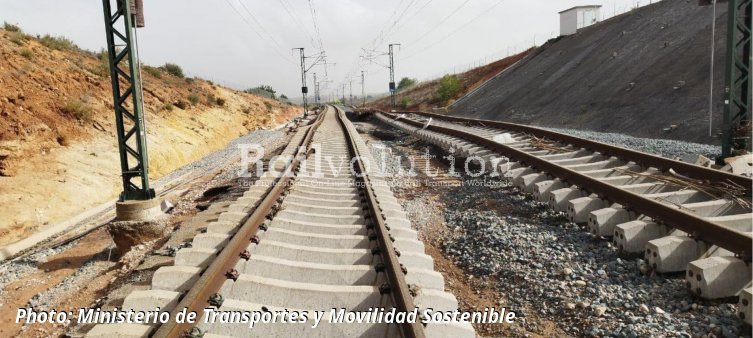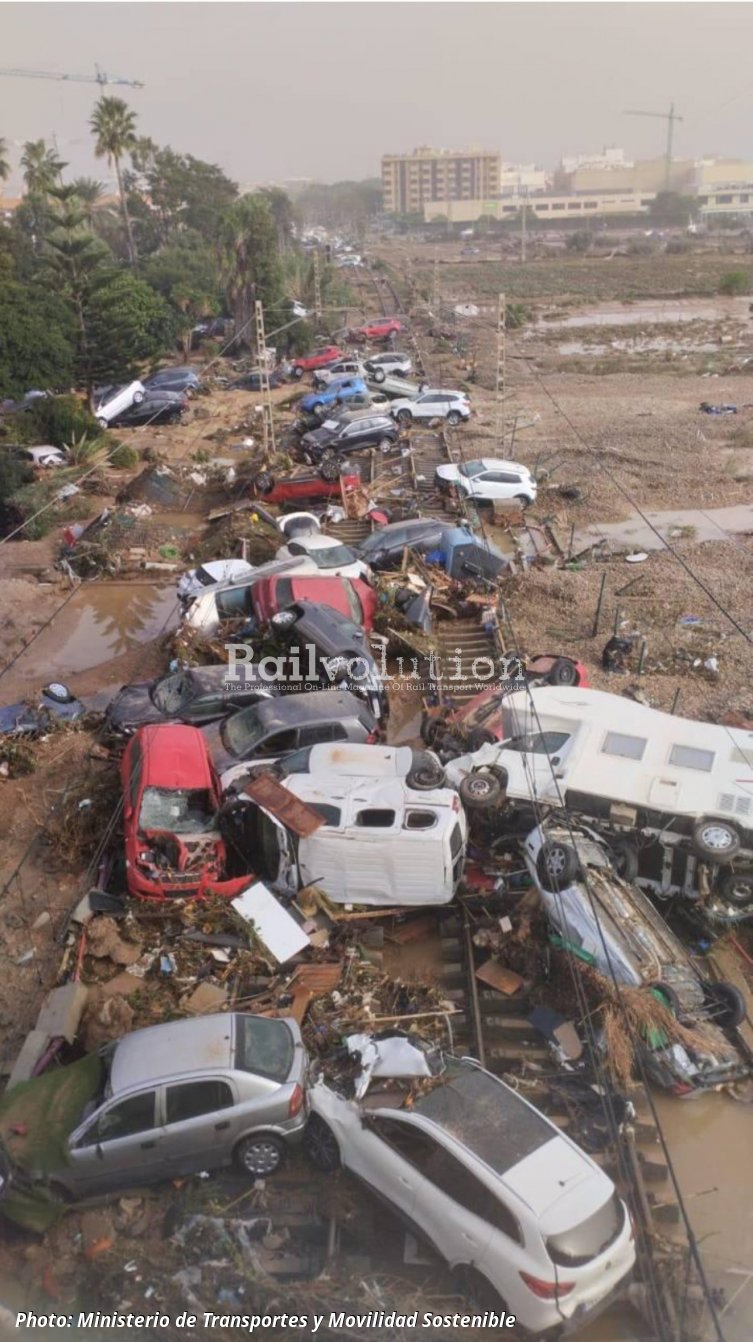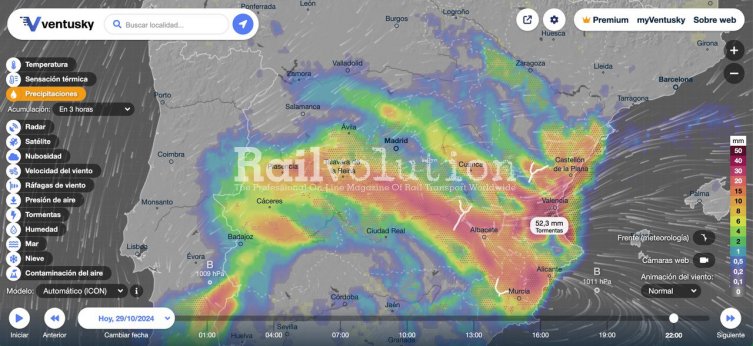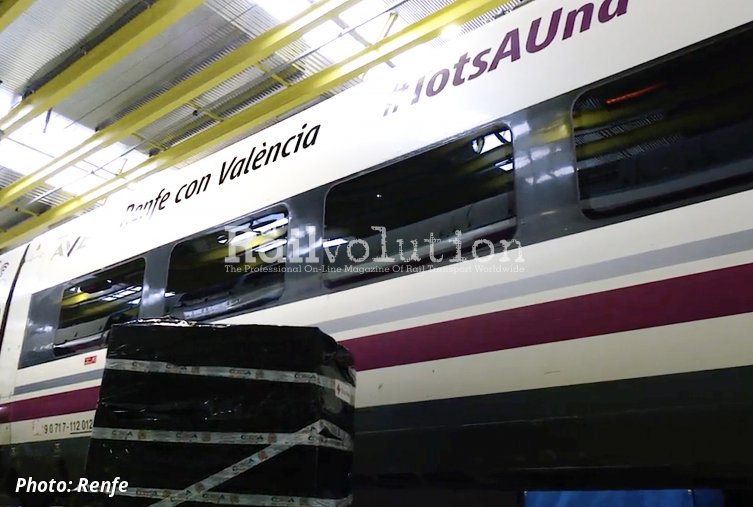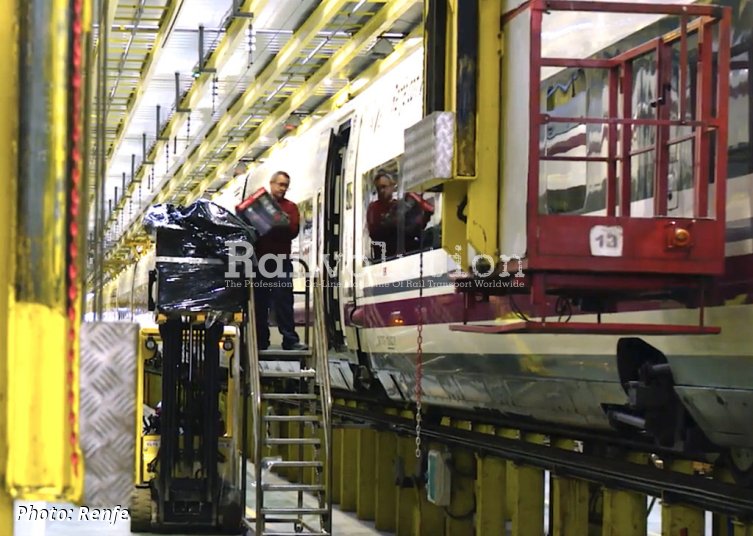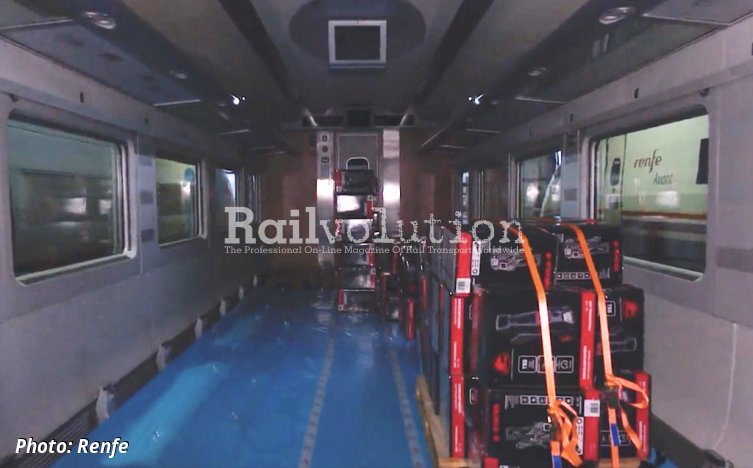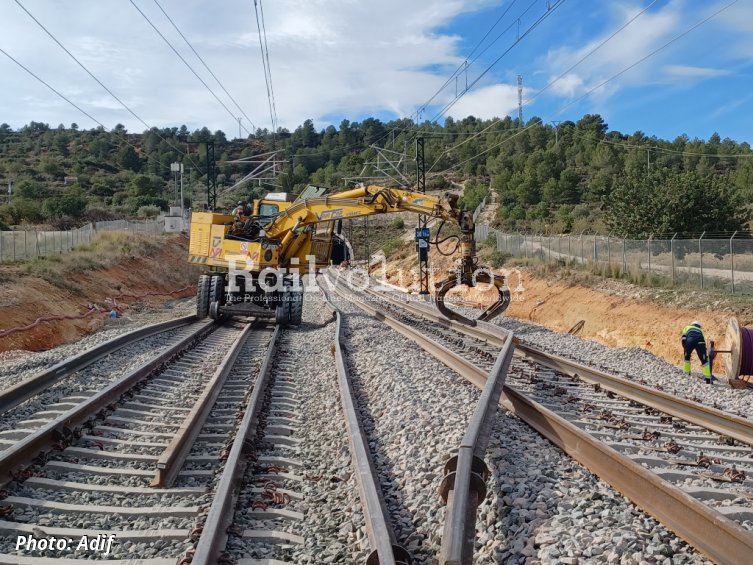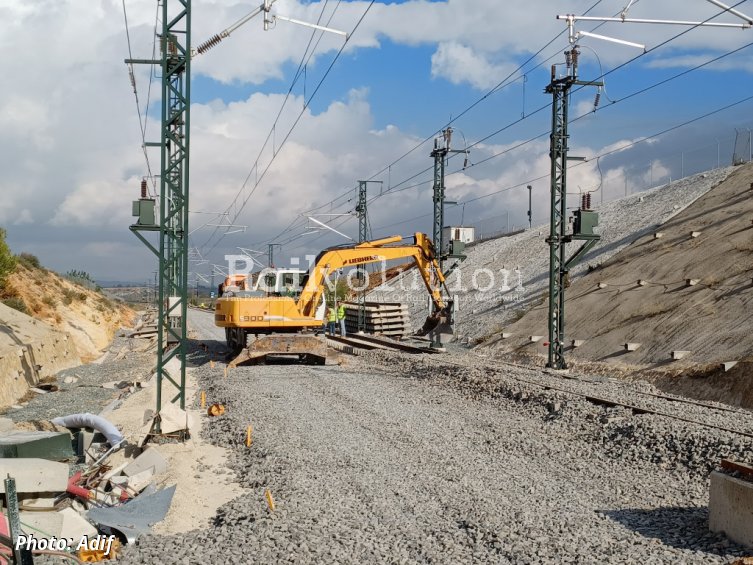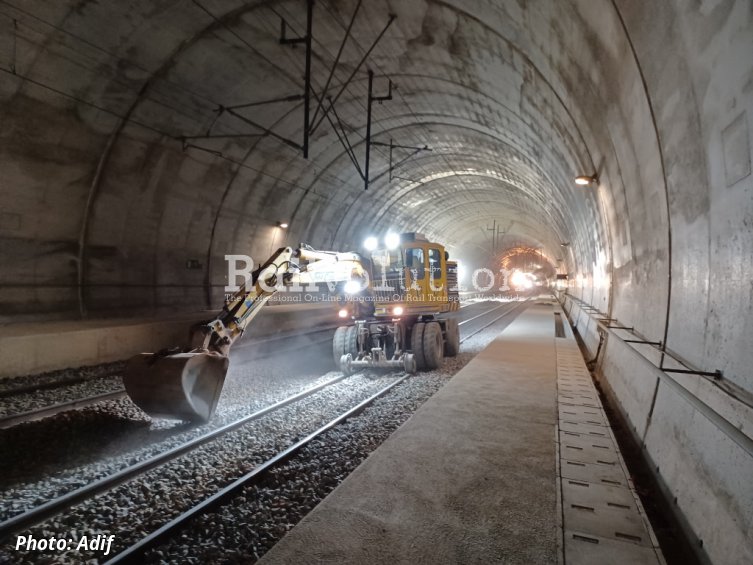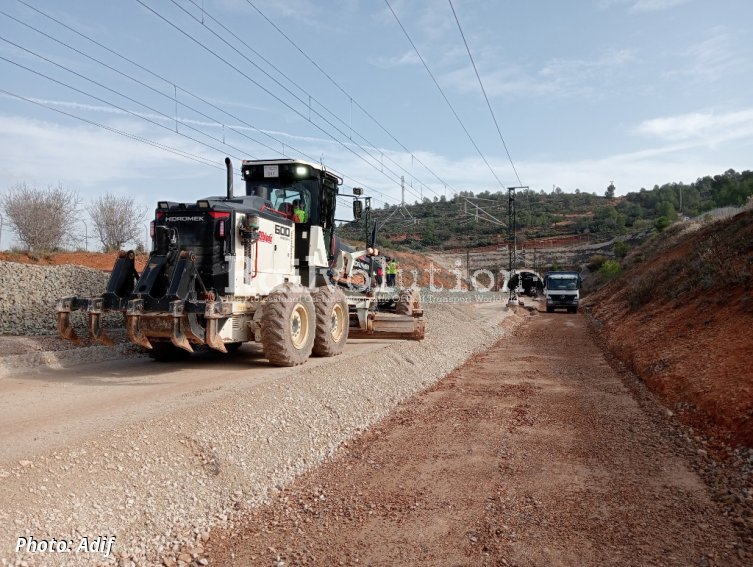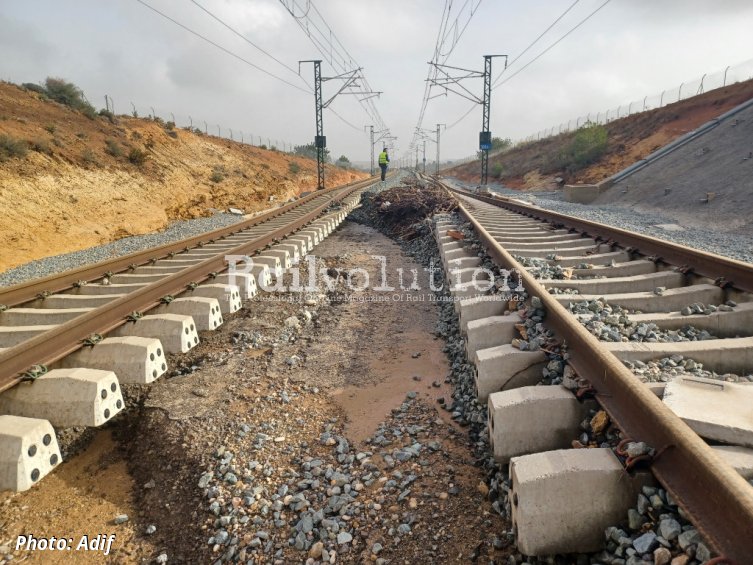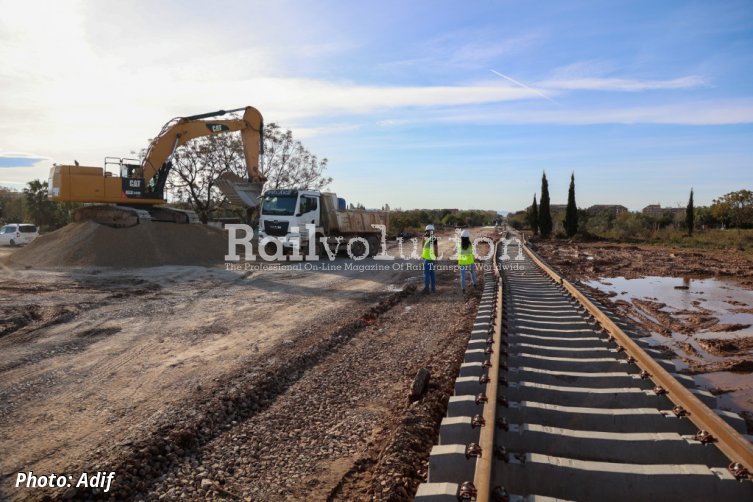Torrential rains cause transport chaos in Mediterranean Spain
posted on 4th Dec 2024 14:56
On 23 October 2024 the Spanish Met. Office (AEMET) issued a warning of extreme weather along the Mediterranean coast, caused by the formation of a DANA (Depresión Aislada en Niveles Altos), a low-pressure area at high altitude (over 9,000 m) levels in the atmosphere, isolated from normal circulations of air, and thus capable of moving and behaving in erratic, unpredictable manners.
DANAs, quite different in structure to Atlantic and polar depressions, are particularly vigorous along the Mediterranean coast in late summer and early autumn, given the high surface temperature of the sea. In 2024 this peaked at a record average of 28.45 ºC over the entire Mediterranean on 13 August, the warmest conditions being recorded east of Sicilia and Malta. The consequences as autumn advanced were Dantesque - the climate simply broke down, causing great loss if life ad severe damage to transport systems.
One of the most destructive DANAs recorded in Spain was that of October 1973, affecting Almería, Granada and Málaga, with precipitation of up to 600 mm per m2 in 24 hours, resulting in a death toll of 150 or more persons. That of September 1962, affecting Vallès, north of Barcelona, resulted in the loss of between 600 and 1,000 lives.
On 25 October 2024 at 13.01 AEMET issued a further yellow warning of heavy showers and powerful, or very powerful storms for the Mediterranean coast, especially in the region of Levante, whose capital is València. These were forecast to occur on 29 October. This was reconfirmed on the 27th with forecasts of precipitation accumulations of over 150 mm in 24 hours on the 29th both in Levante and Murcia. A special warning was issued at 14.04 on the 28th, covering Castilla-La Mancha as well as the coastal regions.
Early in the morning of the 29th AEMET issued a red warning for the Málaga district. From midnight, there had been rainfall of over 100 litres per m2 in the upper valley of the Guadalhorce river, by morning prompting several schools to suspend classes, and resulting in a number of houses being flooded.
On 29 October the 12.05 high speed service (possibly a Class 102 or 112) from Málaga to Madrid-Atocha, with 291 passengers on board, struck a landslide in the vicinity of Álora. The leading bogie of the power car derailed, and the train came to a halt on a viaduct, on a curve. The passengers were transferred to another train (this appears to have been a Class 106), to continue to Madrid. No injuries were reported, single line working was imposed during the rest of the day, and the stranded train was re-railed and moved back to Los Prados works, near Málaga, the following day.
On the 1,668 mm gauge line from Málaga to Bobadilla, the Guadalhorce river, swollen by the torrential rains, flooded the tracks and resulted in Cercanías services between Cártama and Álora being suspended for a short period during the morning of the 29th. At 11.45 water on the track between Bobadilla and Almargen prevented and ALVIA service from Madrid-Atocha to Algeciras from reaching its destination.
Further north and east along the coast, in El Ejido, an area with intensive market gardening, most taking place in a vast sea of plastic greenhouses, AEMET issued an orange severe weather warning for the period between 18.00 on the 27th and 14.00 on the 28th. Late in the evening of the 28th hailstones the size of golf balls fell. The damage to 4,500 hectares of greenhouses caused damage estimated at well over 30 million EUR. Crops - tomatoes, peppers, courgettes and aubergines in particular - were totally destroyed. Much of the harvest was destined for export to northern Europe.
The rainstorms, again with precipitation of over 100 litres per m2, fell on ground that had been hardened after months of near-drought conditions, and was unable to cope, even partially, with the run off. Compared with earlier extreme climatic events, the area of ground cover modified since the 1990s by human activities - plastic greenhouses, trading and industrial estates, the road network and housing developments is far greater in 2024. Often new drainage networks connect into older ones, the latter having insufficient capacity. The whole is a recipe for disaster - flash flooding.
The focus of the DANA continued moving towards the northeast, eventually stopping over Levante. Here on the 29th, at 06.42 AEMET issued an orange warning for heavy rain in Levante, followed at 07.31 by a red warning for interior Levante and at 07.36 by the same for València metropolitan area and the coast. València University duly suspended lectures. At 08.04 AEMET warned of torrential ran, and advised that precautions (such as avoiding permanent and seasonal watercourses) be taken on account of 'extreme' danger. AEMET stated at 09.06 that the situation was 'very complicated' and the red warning would be in force until 18.00 that day.
As the rains intensified during the afternoon of the 29th, RENFE took precautions. At 17.15 Cercanías services (C-3) between València and Utiel were suspended - the tracks were flooded. At 18.15 an articulated lorry fell from an overbridge onto the tracks between Burriana and Nules, resulting in the suspension of C-6 services between València and Castelló de la Plana (C-6). At 18.45 services on C-2 (Vlència to Moixent) were suspended after the Magro river had flooded the tracks between Algemesi and Alzira. And somewhat later C-1 services between València and Gandia were halted.
The high speed network was also affected, with landslides damaging the track at either end of the 631 m long tunnel near Chiva. in the uplands to the west of València. Starting with the 17.42 from València to Burgos, all high speed services were suspended, with OUIGO and IRYO doing the same as Renfe. The first eastbound service from Madrid to València to be cancelled was the 18.30 from Chamartín. The 20.15 Intercity from Barcelona-Sants to València was cancelled.
However, there were also a number of trains en route to València unable to complete their journeys. The 11.09 from Gijón to Castelló de la Plana was stopped at Siete Aguas at 17.31 and sent back to Chamartín. The 16.30 from Chamartín to València was sent back to Cuenca, while the 15.13 from León was stopped at Cuenca at 18.53. the 16.59 from Sevilla to València was terminated at Atocha, then returned to Sevilla, and the 17.51 from León to València only reached Madrid. Adif announced that València Joaquín Sorolla, Madrid Chamartín and Cuenca stations would remain open and staffed overnight to attend to passengers' needs.
In València, a much-delayed Es-Alert warning sent by Civil Protection at 20.35 to all mobile phones prompted FGV to suspend metro and tramway services, together with services on the longer interurban lines. The control centre at València Sur had been flooded. The Es-Alert advised people not to attempt any journeys within València province.
By mid-November the Banco de España had estimated the total cost of damage caused by the DANA at 20 billion EUR. Things would have been different, and fewer lives lost, if the emergency warning services had been activated earlier on the 29th, and if the hydrographic network had been continually upgraded to increase its drainage capacity following the massive urbanisation period of the 1990s and early 2000s. Adif had acted too late in its programmes to update drainage capacities and earthwork resilience. No emergency evacuation system (such as those found in every settlement in Japan) had been in place for the working and resident population. There were lessons to be learned by everybody.
By dawn on the 30th Levante was cut off from the rest of Spain, both by rail and by road. Repair and cleaning up work started immediately, though it was reckoned that months would elapse before normality was resumed. Progress was somewhat more rapid than had been forecast.
After the floods
Freight services were initially re-established during the afternoon of 1 November on the line from València to Sagunt, Teruel and Zaragoza, and also between València and Tarragona, once the fallen lorry had been removed. It was also possible to run two pairs of passenger trains between Barcelona-Sants and València Joaquín Sorolla, one of these train pairs originating and terminating at Figueres-Vilafant.
On 2 November C-5 (València to Caudiel) and C-6 (València to Castelló de la Plana). Cercanías services were revived. Renfe advised passengers that all services were subject to restrictions imposed by the armed forces and civil protection bodies.
On 9 November, following test running since the 6th, FGV was able to restore tram services (off-peak weekday frequencies) on lines 4, 5. 6 and 10. It was then anticipated that the interurban lines serving northern and western Levante - 3 (Rafelbunyol to Aeroport), 5 (Marítim to Aeroport) and 9 (Alboraya to Riba-roja) would not be usable until early December, together with the northern sections of interurban lines 1, 2 and 7, to Bétera, Llíria and Maritim-Torrent. The worst flood damage, affecting both the Renfe and FGV networks, had occurred south of València, in the low-lying Horta Sud and Ribera districts. In all 20 km of railway and 650 km of roads had suffered damages.
With the destruction of the control centre at València Sud, where repairs to infrastructure in the vicinity are estimated to cost over 17 million EUR, a temporary control centre was established at Machado depot at a cost of 3 million EUR. Machado depot was also busy dealing with flood-damaged EMUs. Of the 62 used on MetroValència services, 27 had suffered some form of damage. To cater for passenger movements the Generalitat Valenciana established 20 new bus routes as a temporary measure until the entire FGV network was operational.
Repairs to the high speed line were originally estimated to take up to a month, but Adif Alta Velocidad managed to complete them in just two weeks. Following reconstruction of the flood-damaged infrastructure to the west of València, where complete track relaying and reprofiling through the tunnel at Chiva was necessary, the first reinaugural service from Madrid to València departed from Chamartín on 14 November at 11.30, with the first westbound service leaving València at 12.21. The full Renfe/AVLO high speed service, with 15 train pairs daily, was operated, with OUIGO and IRYO reestablishing their services the same day, at 14.15 and 14.45 respectively.
Also on the 14th Media Distancia services were restored from València to Vinaròs, Zaragoza, Tortosa, Alcázar de San Juan, Murcia and Alacant, though with changes of train at Xàtiva for services west of València, and then with bus transfers to and from Carcaixent.
'Tren Solidario'
With the road network surrounding València still being repaired and cleared of stranded vehicles, Renfe, working together with the Red Cross, decided to convert 112.011 for the transport of much-needed supplies to Levante, where cleaning up and rebuilding work was still in progress following the devastating floods in late October. The seats in one of the end cars were removed, creating a space for lightweight freight.
The first 'Tren Solidario' service using 112-011 departed at 12.30 on the 14th from Madrid-Chamartín, carrying, in addition to passengers, a consignment of 250 high-pressure water cleaning machines. It was planned to keep this service going, carrying various types of consignments, for as long as necessary.
IRYO modified its fare structure, to assist those affected by the flooding, with three fixed single fares on offer, varying between 13.0 and 30.0 EUR according to type of accommodation and on-board catering services required. IRYO also collaborated with the local food bank, by sending a large road trailer to València loaded with food supplies, and with the Red Cross by adding 2.0 EUR to fares, to support the latter's activities in Levante.
Also on the 14th the full Euromed/Intercity service between Barcelona and València was restored, the first trains being the 10.15 from Barcelona-Sants and the 11.25 from València. As regards Cercanías services, on 14 November parts of the network were still being rebuilt:
C-1: València Joaquín Sorolla to Gandia. Bus (every 10 minutes) as far as Silla, then train (every half hour).
C-2: València-Joaquín Sorolla to Xàtiva and Moixent: Bus as far as Carcaixent, then train. On 27 November the short section of line between Carcaixent and Alzira was reopened for Cercanías traffic.
C-3: València Plaza España to Buñol and Utiel: The line which received the worst damage - here a bus service was still being provided.
To maintain a more frequent service between Silla and Gandia two complete Class 447 EMUs and as Class 592 DMU were moved by road from Font de Sant Lluís depot to Silla over the weekend of 16 and 17 November. This increased the number of EMUs at the outer end of the line from five to seven, with the 592 being available if needed. It was then reckoned that services between València and Silla might be restored by the end of December
By 20 November 2024 FGV was hoping to have all the MetroValència network operational by early December, with test runs starting during the last full week of November. The long interurban line south from València Sud to Castelló, like its Renfe counterpart, crossing the sea level floodplain adjacent to the natural lagoon of L'Albufera, will probably not be ready for use until sometime in 2025. Here the Generailtat Valenciana has allocated over 40 million EUR for the repaIr of the line, which includes reconstruction of the river bridge in Paiporta. L'Albufera itself could well have been instrumental in causing some of the flooding, since its area was halved around 1900, with progressive further reduction since the 1950s.
The DANA then moved northeastwards, to Tarragona and Barcelona. Here, AEMET issued a red warning on 4 November, while the Generalitat de Catalunya sent out an Es-Alert to all mobile phones, warning people not to make unnecessary journeys. Civil Protection warned parents not to collect children from school. Renfe suspended all Rodalies and high speed services. In spite of the torrential rains, there was little damage to rail infrastructure, and Renfe was able to restore all services on the 5th.


